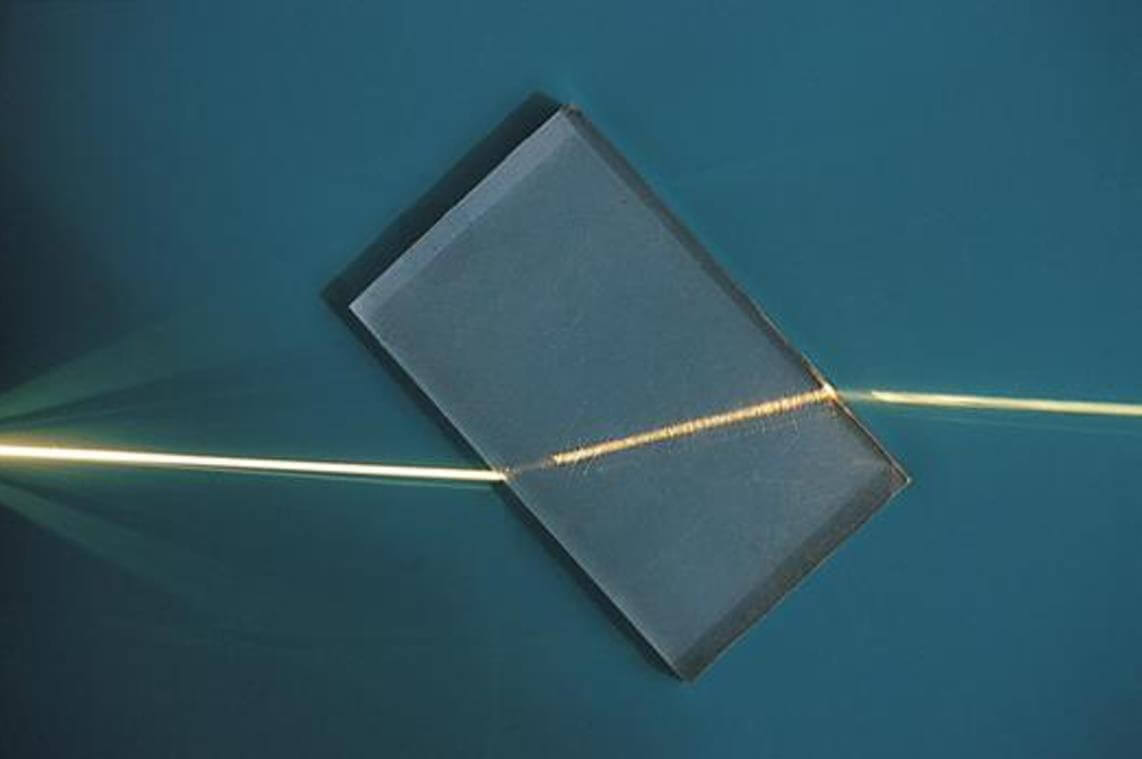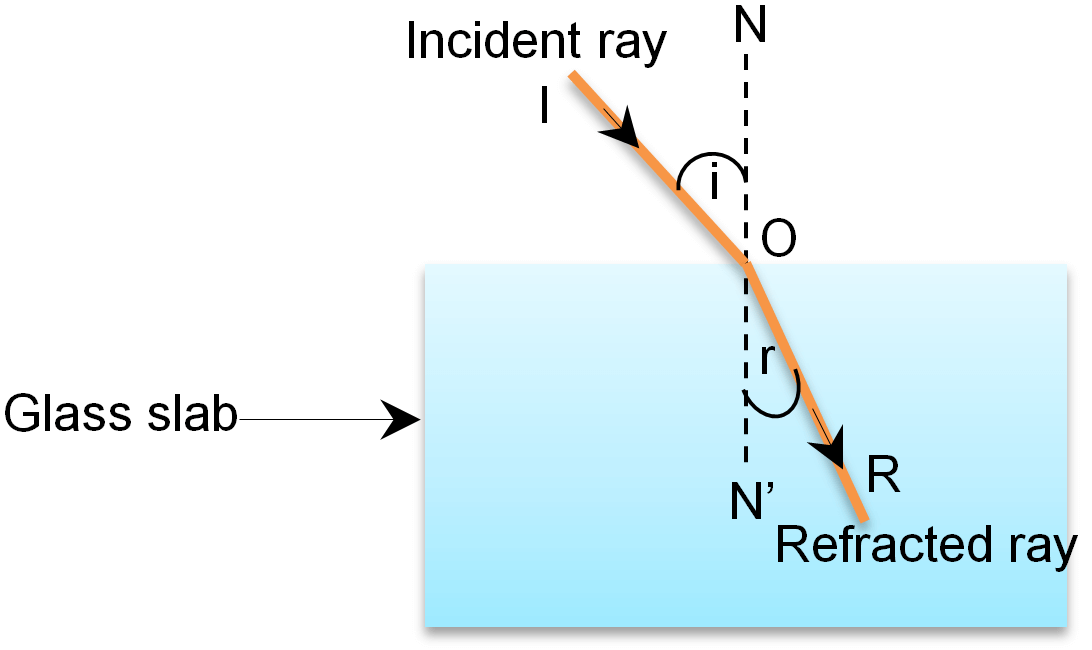The refraction of light may be defined as the phenomenon of change in direction of light, when it passes from one medium to another.
The cause for refraction of light when it passes through one medium to another is the difference of velocity of light in different media. As you already know that the maximum speed of light is in vacuum or air which is 3 × 108 m/s. but it becomes 25% slow when it travels in water and 35% slow when it travels in glass. Thus when light passes from one medium to another, its speed changes and due to the change in speed of light the refraction of light takes place.
We will now understand refraction of light more clearly by taking the example of refraction of light by a rectangular glass slab. As shown in figure (given below), ABCD is a rectangular glass slab. Here we have two different media, one optically rarer medium (air) and the other is optically denser medium (glass slab). Now, a ray of light IO traveling in air falls on the glass slab at point O and goes into the glass slab. But, because the incident ray IO is coming from optically rarer medium air and passing through the optically denser medium glass. So, the direction of incident ray IO changes and it goes along the line OR inside the glass slab. In other words the light has refracted while passing from air into glass slab, as it has changed its direction.

Test Your Understanding and Answer These Questions:
- What is refraction of light? Explain with the help of a diagram.
- What is the cause of refraction of light?
- What happens when a ray of light goes from air into water?
- Describe the refraction of light through a glass slab by making a well labeled diagram.
- What will be the effect on the velocity of a ray of light when it goes from water into glass?
